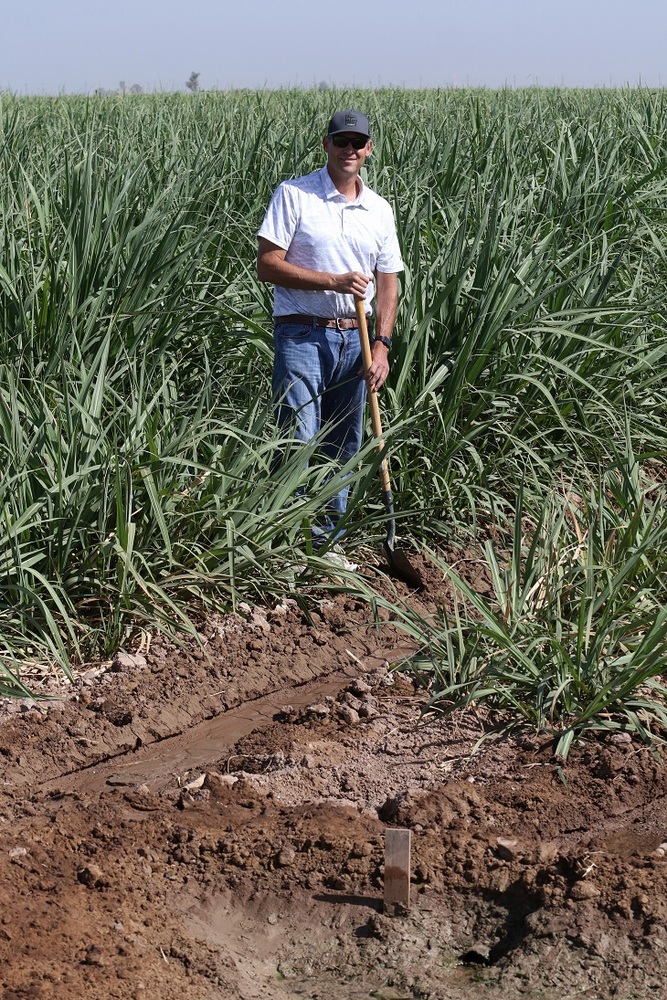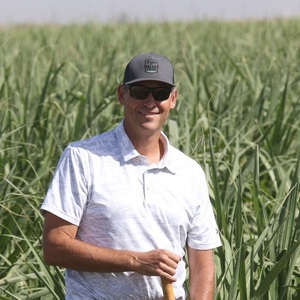Sugarcane cultivation will boost Imperial County's energy boom



October 18, 2022
BY Steve Benson, CEO of Benson Farms
The birth of farming in the Imperial Valley in the early 1900s marked the region’s transformation from a barren desert into a thriving center that today employs thousands and helps feed our entire nation. Today, farming plays a critical role in the region’s economy and has a role to play in the new energy boom, which of late has attracted billions in investment to the County. Sugarcane has the opportunity to bring ethanol production to the valley, helping create a new industry and better environment for Californians.
Imperial County is somewhat unique among California’s major agricultural regions in its long-established water rights and year-round growing season. When the Midwest and Northern states are covered in snow, our Mediterranean climate allows a wide variety of crops to be grown on the 450,000 acres of farmlands in the Valley. Alfalfa (hay) and forage grasses make up the largest percentage, but top ten crops include lettuce, broccoli, carrots, onions, and other food staples. Our variety of crops continues to adapt to market conditions and demands, but Valley farmers have the ability and know-how to grow what’s needed by regional processors and distributors. Farms in our region, such as Benson Farms, collectively grow two-thirds of the winter vegetables consumed annually in the U.S.A.
The Benson family farm was founded by my grandfather Jack Harold Benson who moved to Imperial County with my great-grandfather Robert A. Benson from Kansas in 1932. Our first major crop was flax, which was used to make linseed oil often used in paints, wood varnish and even linoleum. Flax was also used in the manufacture of rope, canvas and tents and was a critically needed product during the entire period of World War II. As farmers know, crops change with demand and oil-based paints cut the need for flax.
In the 1950s, farmers developed cotton as a major crop in the Imperial Valley. In addition to helping to expand the cotton industry throughout the southwest, my father John Benson also grew soybeans, cannery tomatoes, olives and popcorn. When cotton began to decline in the Valley, he used the land to grow onions and vegetables, as well as alfalfa. Big John and Sweet Caroline (named after my mother, Carolyn) onions were branded and became staples of Imperial Valley's sweet onion crops sold through the United States and Canada.
Currently, most of our crops are grown under contracts and include dehydrated onions and leafy greens such as cabbage and romaine lettuce. We farm over 3,000 acres, with 600 acres allocated for organic crops. We employ 25 staff year-round and use contract labor to double our size for seasonal planting and harvest. Unlike in decades past, most of the crops grown today are processed beyond the borders of Imperial County. Our old cotton gin plant was converted to a hay press over a decade ago and, along with many other farmers, we began to export forage products throughout Asia and the Middle East.
Advertisement
Advertisement
Meanwhile, we are seeing billions invested in what could be California’s next big energy boom, which started with geothermal energy projects and has been followed by solar energy farms, wind and most recently lithium extraction. Imperial County’s leaders have shown strong support for economic development efforts in response to the region’s higher than average unemployment rate and have aggressively supported new proposals.
With the $1 billion investment planned for the Sugar Valley Energy project, we are enthusiastic about the prospect of growing sugarcane. The crop will be used to produce low-carbon ethanol for a variety of uses including more sustainable transportation fuel. Besides ethanol, the project will also produce bioelectricity and pipeline-grade biogas. At Benson Farms, we have grown sugarcane for almost a decade and found it uses approximately the same amount of water as forage crops. Our local farming community can be counted on to innovate and adapt to future water conservation goals, and we have proven that sugarcane can thrive in the Valley.
At full scale, the project will contract with as many as 100 farms to produce 48,000 acres of sugarcane. That is compared to more than 250,000 acres currently farmed for alfalfa and forage grass. Since the crop will be processed right here in the Valley, the county will enjoy greater economic benefits of increased employment and year-round harvest and ethanol production. Contracts for the sugarcane crop will be multi-year agreements providing better returns, consistent cashflow, and greater economic protection for growers than typical single year crops.
Even with electric vehicles gaining their share of vehicles on the road, ethanol will remain an important product for decades to come. The other products associated with this project, like baseload zero carbon electricity and biogas are immediately needed and will only grow in importance as California pursues its wide array of climate change and clean energy goals. California is right to encourage ethanol production in a manner that further reduces carbon emissions and moves Californians away from 100 percent reliance on less sustainable imported ethanol. Lower-carbon fuel and renewable energy remains critically important for Imperial County, especially with our air quality challenges. Moreover, the ethanol plant development and related sugarcane cultivation is beneficial to farmers and the region which continues to grapple with double-digit unemployment and a lack of new industrial development.
Advertisement
Advertisement
It seems quite fitting that Imperial Valley’s oldest industry represents a key component of one of its newest economic development trends.
A third-generation farmer, Steve Benson is CEO of Benson Farms. He serves as advisor to the Imperial Valley Farm Bureau, is Board Secretary/Treasurer for the Imperial Valley Vegetable Growers Association, and is a Director for the Imperial Valley Economic Development Council.
Related Stories
The USDA significantly increased its estimate for 2025-’26 soybean oil use in biofuel production in its latest World Agricultural Supply and Demand Estimates report, released July 11. The outlook for soybean production was revised down.
The U.S. Energy Information Administration maintained its forecast for 2025 and 2026 biodiesel, renewable diesel and sustainable aviation fuel (SAF) production in its latest Short-Term Energy Outlook, released July 8.
XCF Global Inc. on July 10 shared its strategic plan to invest close to $1 billion in developing a network of SAF production facilities, expanding its U.S. footprint, and advancing its international growth strategy.
U.S. fuel ethanol capacity fell slightly in April, while biodiesel and renewable diesel capacity held steady, according to data released by the U.S. EIA on June 30. Feedstock consumption was down when compared to the previous month.
XCF Global Inc. on July 8 provided a production update on its flagship New Rise Reno facility, underscoring that the plant has successfully produced SAF, renewable diesel, and renewable naphtha during its initial ramp-up.
Upcoming Events










